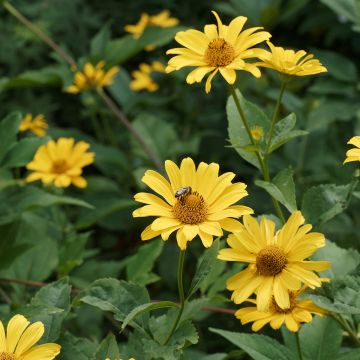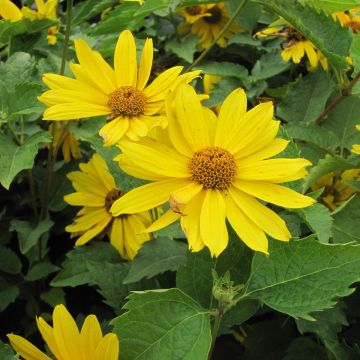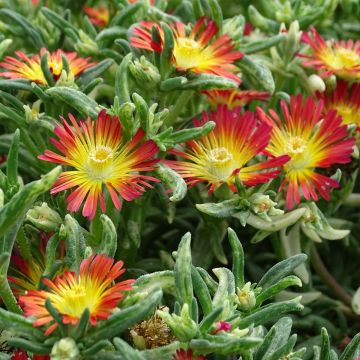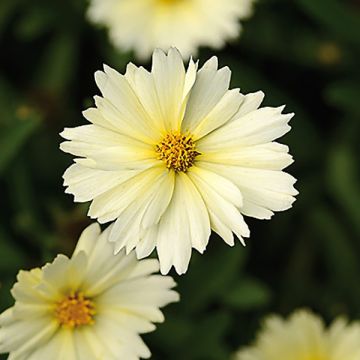

Heliopsis helianthoides var. scabra Sommersonne
Heliopsis helianthoides var. scabra Summer Sun
Oxeye sunflower, False sunflower, Smooth oxeye, Rough oxeye
This item cannot be shipped to the selected country
Delivery charge from €5.90
More information
Delivery charge from €5.90
More information
Schedule delivery date,
and select date in basket
This plant carries a 12 months recovery warranty
More information
We guarantee the quality of our plants for a full growing cycle, and will replace at our expense any plant that fails to recover under normal climatic and planting conditions.
From €5.90 for pickup delivery and €6.90 for home delivery
Express home delivery from €8.90.
Does this plant fit my garden?
Set up your Plantfit profile →
Description
The flowers of Heliopsis helianthoides 'Sommersonne', also known as 'Summer Sun', are bright and golden, they will illuminate the dull days of autumn with their double suns. They rise high on tall, strong, and rigid stems. This beautiful perennial is both similar in appearance and closely related to the famous sunflower, Helianthus. It is an undemanding plant, suitable for any well-drained soil, in full sun or partial shade. Its great vigour and simplicity make it suitable for the back of borders and naturalistic compositions.
Heliopsis helianthoides var. scabra 'Sommersonne' belongs to the Asteraceae family. Heliopsis helianthoides var. scabra, from which it originates, is native to North America, where it is generally found in open woodlands and tall grass prairies, less commonly along roadsides.
The cultivar 'Sommersonne' is a perennial plant with a non-spreading woody stump. It forms a spreading bushy clump, made up of numerous sturdy stems, reaching a height of up to 90cm (35in) and spreading 60cm (24in) wide. Its growth rate is moderate to fast. Flowering occurs from June to September. The inflorescence appears at the end of branched stems and consists of several heads (capitules), themselves made up of double, bright yellow ligulate flowers (the 'petals') and brownish florets forming the disk. The deciduous foliage extends to the top of the stems, it is bright green and rough, with lanceolate and dentate leaves, slightly triangular.
Trends are quite puzzling because the upright habit of these perennials, their long flowering period, and their low requirements are all keys that should open the door to every garden... but no! Yet, all specialists agree that they are excellent perennial plants. 25 years ago, Alan Bloom, a famous perennial plant breeder in England, said: "These are certainly the last plants I would get rid of if I decided to eliminate the yellow colour from the borders in my garden." Combine Heliopsis Summer Sun with other tall, easy-going perennials such as hybrid mulleins, Buenos Aires verbena, tansies, sneezeworts, and Franchet's ground cherry.
Heliopsis helianthoides var. scabra Sommersonne in pictures


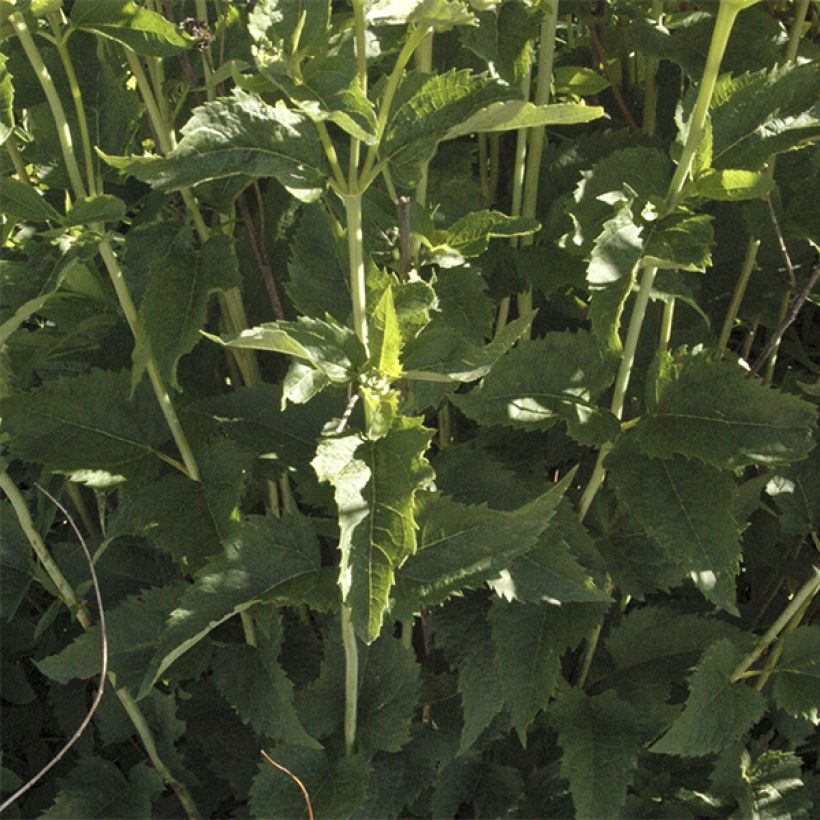

Flowering
Foliage
Plant habit
Botanical data
Heliopsis
helianthoides var. scabra
Summer Sun
Asteraceae
Oxeye sunflower, False sunflower, Smooth oxeye, Rough oxeye
Cultivar or hybrid
Other Heliopsis
Planting and care
Heliopsis are easy to grow plants. They adapt to any well-drained soil and only fear excessive winter moisture and excessively dry soil in summer. However, they tolerate clayey, poor, and occasionally dry soils. Heliopsis helianthoides 'Sommersonne' prefers a sunny exposure, but it tolerates partial shade, which will give it a slightly looser habit and will require some light staking. It should be protected from strong winds. It is preferable to remove faded flowers to promote reblooming. The plant can be divided every 2 to 3 years to maintain its vigour. You can also cut back the plant by half in early June to promote the strength of the clump. Note that certain varieties of Heliopsis are susceptible to powdery mildew and rust when growing conditions are not optimal.
Planting period
Intended location
Care
Summer flowering perennials
Haven't found what you were looking for?
Hardiness is the lowest winter temperature a plant can endure without suffering serious damage or even dying. However, hardiness is affected by location (a sheltered area, such as a patio), protection (winter cover) and soil type (hardiness is improved by well-drained soil).

Photo Sharing Terms & Conditions
In order to encourage gardeners to interact and share their experiences, Promesse de fleurs offers various media enabling content to be uploaded onto its Site - in particular via the ‘Photo sharing’ module.
The User agrees to refrain from:
- Posting any content that is illegal, prejudicial, insulting, racist, inciteful to hatred, revisionist, contrary to public decency, that infringes on privacy or on the privacy rights of third parties, in particular the publicity rights of persons and goods, intellectual property rights, or the right to privacy.
- Submitting content on behalf of a third party;
- Impersonate the identity of a third party and/or publish any personal information about a third party;
In general, the User undertakes to refrain from any unethical behaviour.
All Content (in particular text, comments, files, images, photos, videos, creative works, etc.), which may be subject to property or intellectual property rights, image or other private rights, shall remain the property of the User, subject to the limited rights granted by the terms of the licence granted by Promesse de fleurs as stated below. Users are at liberty to publish or not to publish such Content on the Site, notably via the ‘Photo Sharing’ facility, and accept that this Content shall be made public and freely accessible, notably on the Internet.
Users further acknowledge, undertake to have ,and guarantee that they hold all necessary rights and permissions to publish such material on the Site, in particular with regard to the legislation in force pertaining to any privacy, property, intellectual property, image, or contractual rights, or rights of any other nature. By publishing such Content on the Site, Users acknowledge accepting full liability as publishers of the Content within the meaning of the law, and grant Promesse de fleurs, free of charge, an inclusive, worldwide licence for the said Content for the entire duration of its publication, including all reproduction, representation, up/downloading, displaying, performing, transmission, and storage rights.
Users also grant permission for their name to be linked to the Content and accept that this link may not always be made available.
By engaging in posting material, Users consent to their Content becoming automatically accessible on the Internet, in particular on other sites and/or blogs and/or web pages of the Promesse de fleurs site, including in particular social pages and the Promesse de fleurs catalogue.
Users may secure the removal of entrusted content free of charge by issuing a simple request via our contact form.


































